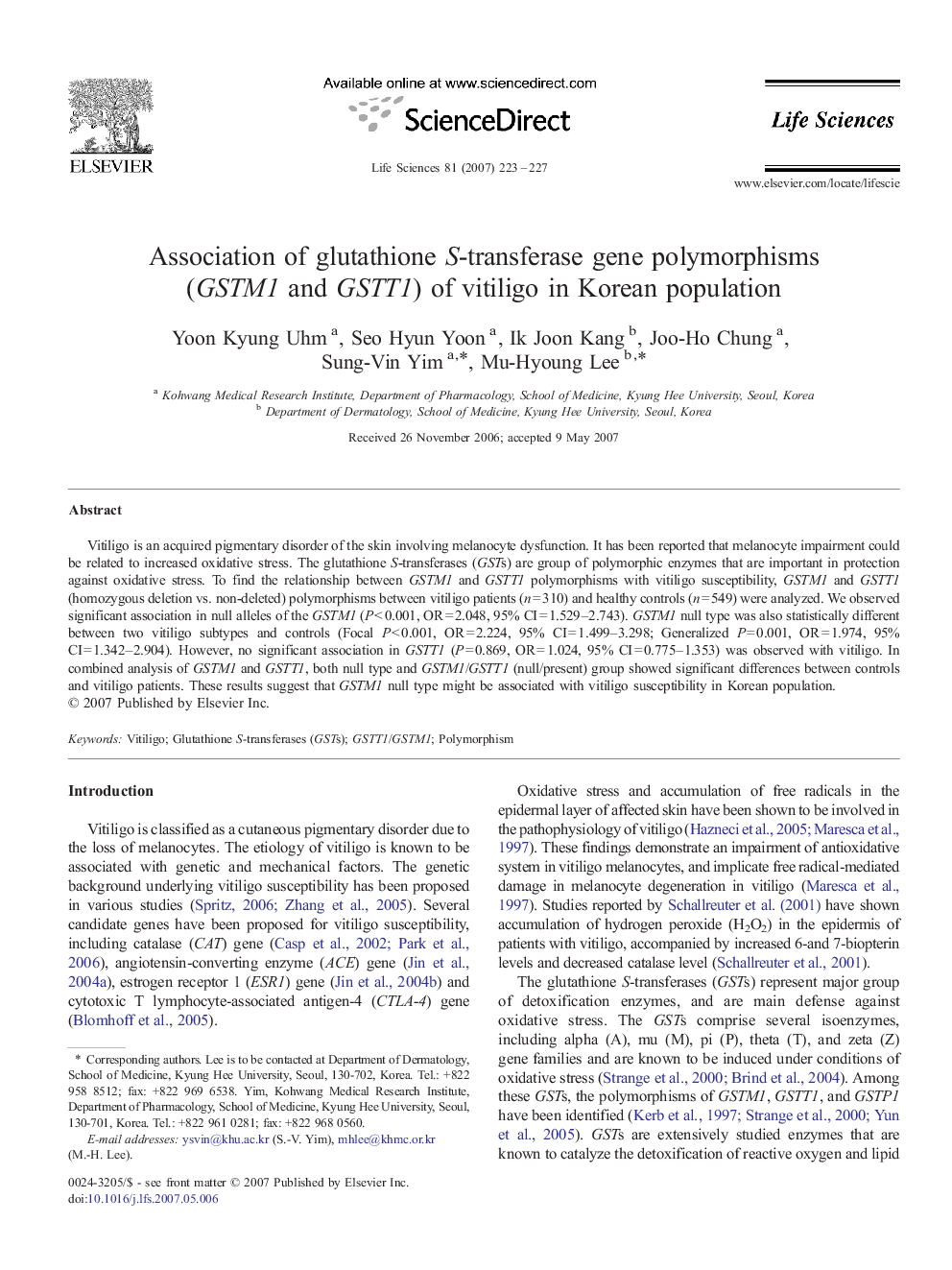| Article ID | Journal | Published Year | Pages | File Type |
|---|---|---|---|---|
| 2553474 | Life Sciences | 2007 | 5 Pages |
Vitiligo is an acquired pigmentary disorder of the skin involving melanocyte dysfunction. It has been reported that melanocyte impairment could be related to increased oxidative stress. The glutathione S-transferases (GSTs) are group of polymorphic enzymes that are important in protection against oxidative stress. To find the relationship between GSTM1 and GSTT1 polymorphisms with vitiligo susceptibility, GSTM1 and GSTT1 (homozygous deletion vs. non-deleted) polymorphisms between vitiligo patients (n = 310) and healthy controls (n = 549) were analyzed. We observed significant association in null alleles of the GSTM1 (P < 0.001, OR = 2.048, 95% CI = 1.529–2.743). GSTM1 null type was also statistically different between two vitiligo subtypes and controls (Focal P < 0.001, OR = 2.224, 95% CI = 1.499–3.298; Generalized P = 0.001, OR = 1.974, 95% CI = 1.342–2.904). However, no significant association in GSTT1 (P = 0.869, OR = 1.024, 95% CI = 0.775–1.353) was observed with vitiligo. In combined analysis of GSTM1 and GSTT1, both null type and GSTM1/GSTT1 (null/present) group showed significant differences between controls and vitiligo patients. These results suggest that GSTM1 null type might be associated with vitiligo susceptibility in Korean population.
